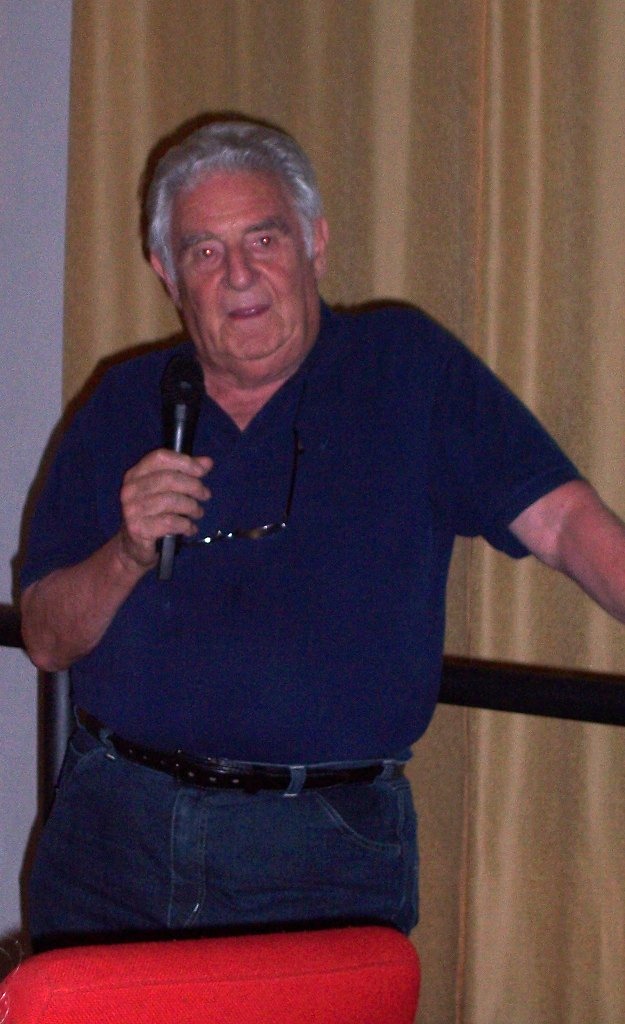Emmanuel Anati (2011) (Foto Luca Giarelli) on:
[Wikipedia]
[Google]
[Amazon]
 Emmanuel Anati ( Florence, 14 May 1930) is an Italian archaeologist.
Emmanuel Anati ( Florence, 14 May 1930) is an Italian archaeologist.
 Emmanuel Anati ( Florence, 14 May 1930) is an Italian archaeologist.
Emmanuel Anati ( Florence, 14 May 1930) is an Italian archaeologist.
Biography
Emmanuel Anati was born in Florence in 1930 to Ugo and Elsa Castelnuovo, a family of Jewish origin. In 1948, he got the scientific maturity in the "Righi" institute of Rome. He then moved to Jerusalem, where he graduated in archaeology from Hebrew University in 1952. In 1959, Anati specialized in anthropology and social sciences at Harvard University. In 1960, he earned a Ph.D. in Literature at the Sorbonne in Paris. Anati has performed excavations and archaeological research in Israel (especially in theNegev desert
The Negev or Negeb (; he, הַנֶּגֶב, hanNegév; ar, ٱلنَّقَب, an-Naqab) is a desert and semidesert region of southern Israel. The region's largest city and administrative capital is Beersheba (pop. ), in the north. At its southe ...
), Spain, France, and other European countries. Based on the results of his discoveries in the Sinai Peninsula, Anati has become a supporter of the thesis that the Biblical Mount Sinai is not to be identified as Gebel Katherina, but as Har Karkom instead; he also believes that the Exodus should be placed between the 24th and the 21st century BCE, instead of the traditional date between 17th and 13th century BCE.
This identification has not gained acceptiance: Israel Finkelstein
Israel Finkelstein ( he, ישראל פינקלשטיין, born March 29, 1949) is an Israeli archaeologist, professor emeritus at Tel Aviv University and the head of the School of Archaeology and Maritime Cultures at the University of Haifa. Fin ...
(who denies the historicity of the Exodus) described Anati's methods as "an anachronistic vestige from the 19th century", while James K. Hoffmeier
James K. Hoffmeier (born February 13, 1951 in Egypt) is an American Old Testament scholar, an archaeologist and an egyptologist. He was Professor of Old Testament and Ancient Near Eastern History and Archaeology at Trinity Evangelical Divinity S ...
(who supports the historicity of the Exodus, but in the traditional 13th century date) has stressed that "the type of Early Bronze Age cultic installations discovered at Har Karkom have also been found in significant numbers in the southern desert, Negev, and Sinai—so Anati's finds are not unique".
In the 1950s, Anati explored Val Camonica, whose rock carvings
A petroglyph is an image created by removing part of a rock surface by incising, picking, carving, or abrading, as a form of rock art. Outside North America, scholars often use terms such as "carving", "engraving", or other descriptions ...
are one of the largest sites for rock art in Europe. In 1964 he founded the ''Centro Camuno di Studi Preistorici'' (CCSP) in Capo di Ponte, in order to study the prehistoric and tribal art and contribute to the enhancement of this cultural heritage.
In 1962, he married Ariela Fradkin.
Works
*''Palestine Before the Hebrews: A History, From the Earliest Arrival of Man to the Conquest of Canaan'', 1963 *''Mountain of God'', 1986 *''Camonica Valley: A Depiction of Village in the Alps From Neolithic Times to the Birth of Christ as Revealed by Thousands of Newly found Rock Carvings'', 1961 *''Camonica Valley'', 1961 *''Evolution and style in Camunian rock art: An inquiry into the formation of European civilization'', 1976 *''Les mystères du mont Sinaï'', 2000See also
* Har Karkom *Rock Drawings in Valcamonica
The rock drawings in Valcamonica (Camonica Valley) are located in the Province of Brescia, Italy, and constitute the largest collections of prehistoric petroglyphs in the world. The collection was recognized by UNESCO in 1979 and was Italy's f ...
* Exodus: A Journey to the Mountain of God
References
External links